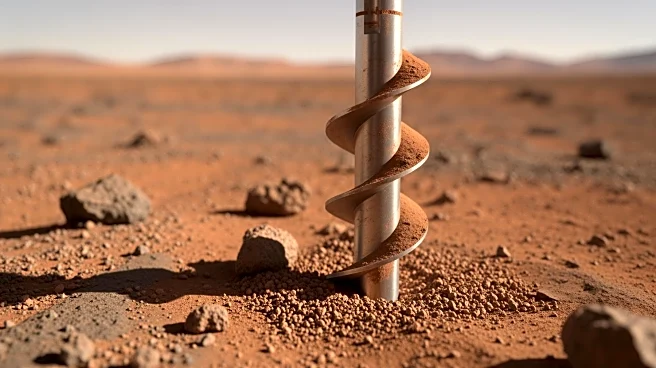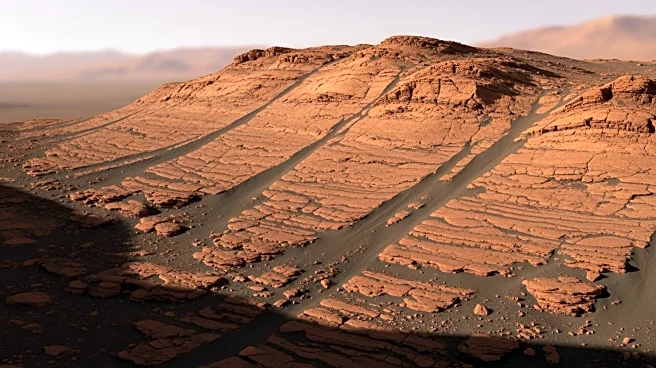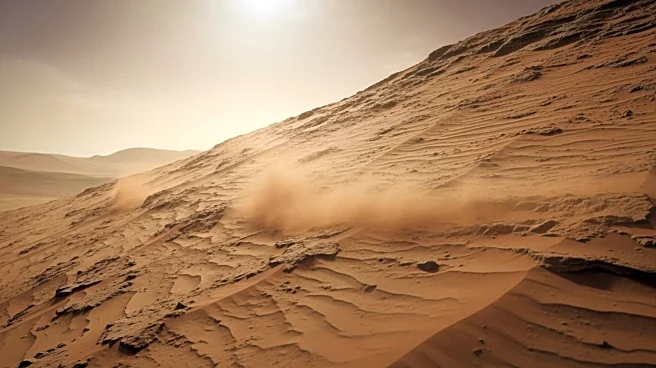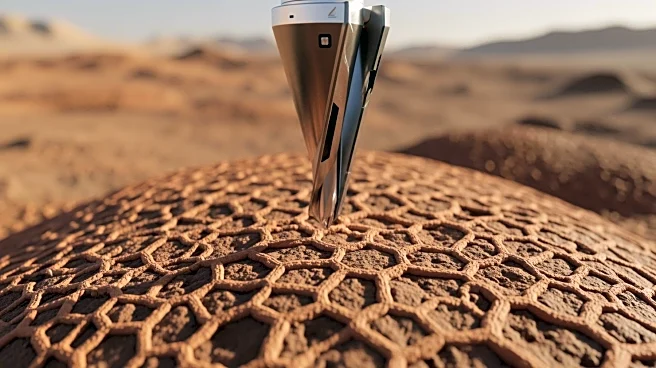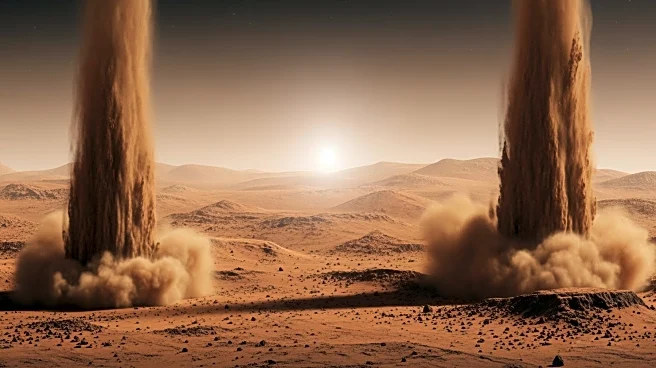What's Happening?
NASA's Curiosity rover is conducting scientific investigations at the 'Valle de la Luna' site on Mars. The rover is analyzing samples using its onboard instruments, including CheMin and SAM, to study the chemical
composition of Martian rocks. The rover's activities are part of its ongoing mission to explore the Martian surface and gather data on the planet's geology and atmosphere. The current focus is on understanding the chemical variability of the drill target block and investigating atmospheric conditions.
Why It's Important?
Curiosity's mission contributes to our understanding of Mars and the potential for past or present life on the planet. The data collected by the rover helps scientists study the planet's geological history and assess its habitability. The mission also supports future exploration efforts, including potential human missions to Mars. Curiosity's findings are crucial for developing strategies to explore and utilize Martian resources, advancing our knowledge of the solar system.
What's Next?
Curiosity will continue its scientific investigations, with plans to reposition the rover for further analysis of potential drill targets. The rover's activities will focus on studying the chemical diversity of Martian rocks and monitoring atmospheric conditions. As the mission progresses, scientists will analyze the data to gain insights into Mars' geological processes and environmental conditions. The rover's findings will inform future exploration missions and contribute to the broader understanding of Mars.




